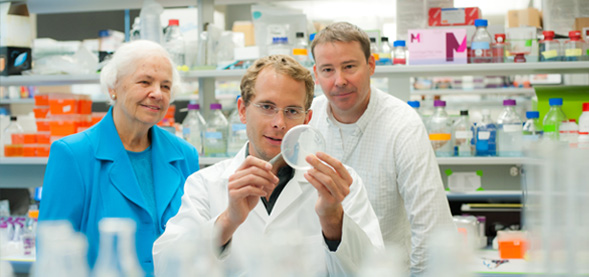DNA Synthesis Generates Terminal Duplications That Seal End-to-End Chromosome Fusions
Authors: Mia Rochelle Lowden (Department of Genetics, University of North Carolina, Chapel Hill, NC), Shawn Ahmed (Department of Biology, University of North Carolina, Chapel Hill, NC), Stephane Flibotte, Donald G. Moerman, (University of British Columbia, Vancouver), Lab of Donald Moerman, Cell and Developmental Biology Research Group, Department of Zoology
Published in Science 22 April 2011: Vol. 332 no. 6028 pp. 468-471 DOI: 10.1126/science.1199022
Abstract: Understanding Chromosome Fusions
Telomeres are DNA repeats that cap the ends of linear chromosomes to prevent them from being recognized as DNA damage. Loss of these caps can result in catastrophic end-to-end chromosome fusions, the repair of which frequently shapes the landscape of tumor genomes. Lowden et al. (p. 468 <http://www.sciencemag.org/lookup/doi/10.1126/science.1199022> ) looked at the consequences of end-to-end chromosome fusions in telomerase-deficient mutants of the nematode worm Caenorhabditis elegans, which, unlike humans, has holocentric centromeres that are stable after such fusions. Many of the chromosome aberrations involved complex fusion events—duplications, triplications, and nonduplicated sequences, possibly generated by DNA replication template-switching, as well as breakpoints that were sealed by microhomology—some of which have parallels to events seen in tumor development.





